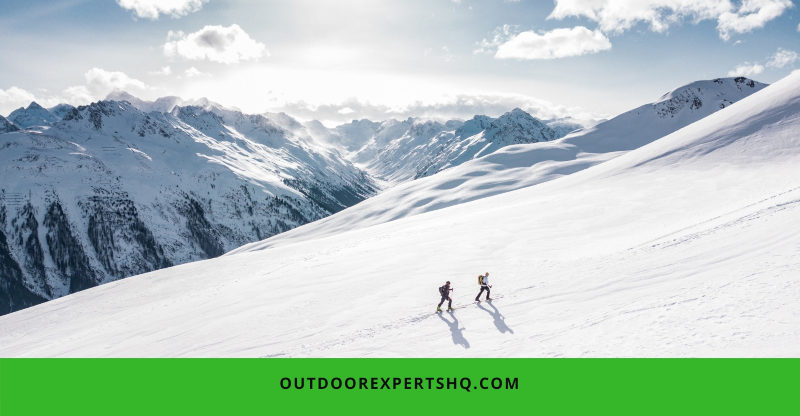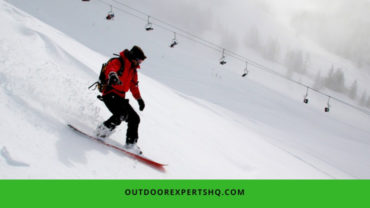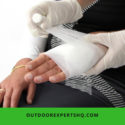5 Tips For Hiking In Cold Weather
Hiking is challenging enough. Don’t let the cold weather add one more hurdle to it. Hiking during the colder months or in colder regions can be extremely rewarding. But, it requires extra preparation too. Just a couple of things checked off your checklist and you will be able to have your usual hiking adventure in a brand-new landscape.
The winters are when you don’t have to worry about scorching heat and crowded trails. People fail to leave their cozy beds on winter mornings. And most of them prefer to stay indoors away from the cold and snow. But, you can maximize this and visit all your favorite popular hiking destinations which are impossibly crowded during the rest of the year.
Tips For Hiking In Cold Weather
The following are the many tips and tricks that will definitely help you while hiking in cold weather.
1. Cover Your Feet Properly
Your feet come under extra pressure from the cold weather conditions. They are already carrying your entire body weight. So they need to be in waterproof shoes with thick socks. This way you won’t get into trouble of getting wet or frostbite as you make way through the snow.
Well-fitted synthetic or woolen socks are the best to hike in during winters. You might also want to get a not-so-tight fitting on your shoes. People assume that it will prevent them from slipping off and provide a better grip. But in reality, you will be just cutting off the circulation to your feet with that death grip.
The boots with built-in insulation will keep your feet warm all day long. You won’t be freezing to death as you climb up those elevations in your well-fitted shoes. Also, carry an extra pair of socks, just in case. More often than not, you might step into a puddle or just get the snow in. The extra socks pair will come real handy in these scenarios.
2. Invest in Good Water Bottles
Hydration is important in all kinds of exercises including hiking. The drink tube of your hydration reservoir will most probably freeze as the temperature dips. That is why sturdy insulated water bottles or canisters are the better choices for this. You can get an insulated sleeve for an ordinary bottle too.

This will keep the water from freezing for a lot longer as compared to otherwise. When the bottles do freeze, they will do it from top to bottom. That means you might actually have water in a drinkable state at the bottom. But your sipper will be frozen shut.
So keep your bottles in upside downstate since the start to fix this problem. Make sure that your bottle is leak-proof and is properly capped. Avoid keeping the bottle in the exterior pocket of your bag or clothes. If you can, nestle them around with sufficient stuff at the core of your bag to have easy access to proper hydration at all times.
3. Pay Attention to Hypothermia Signs
Hypothermia is when your body temperature falls down below the normal range. The various levels of this disorder are mild, moderate and severe. You need to evacuate and rush to the nearest medical clinic immediately in case of moderate to severe hypothermia.
The mild hypothermia can be fully treated on-site so that you can continue with your hike. The common symptoms of hypothermia are shivering, deteriorated coordination and slowed mental capacity. The shivering stops and the pulse is undetectable in case of severe hypothermia.
You need to provide sufficient hot food and water to the patient in case of severe hypothermia. This way they can resume shivering that allows the body to generate required body heat. Remove them from the hypothermia inducing region such as rain, snow, wind or whatever the case may be. Offer them dry clothes and wrap them in enough layers to keep them warm till the hospital.
4. Put On Useful Layers
The layering process has three main sections – the base, mid and shell layers. You need to take them off and put them on according to your body temperature during various levels of the hike. This is to prevent excessive sweating. It might lead to your layers getting wet thus causing hypothermia.

You need to maintain a moderate body heat level at all times during your winter hike. Avoid cotton as it takes too long to dry out. Synthetic and Woolens are your best bet with their quick drying time and insulation.
Your base layer is to wick away the sweat. The mid-layer will provide warmth and help you retain your body heat. The shell layer should keep the winds and moisture at bay. Go for a breathable material for the base layer if possible.
5. Keep Food And Drinks From Freezing
It is best to bring more than enough food and drinks supply with you. You will not be starving or dying of thirst even if you get stranded by packing that extra bit. Try to pack piping hot tea/coffee/cocoa drinks in those vacuum-insulated bottles. It will give the drinks a fighting chance against the freezing weather outside.

The foods like cheese, nuts, candy, and chocolates tend to stay at edible temperatures for a lot longer. You need to experiment a bit for finding out your favorite snacks that don’t convert to rock on your winter hikes. You can try to pack them closer to your body so that your body heat facilitates optimum temperature for them.
The drink tube can be kept unfrozen with a bit of foam DIY. Or, you can get a specialized drink tube that keeps the water unfrozen even at freezing temperatures. Try to sip often so that the water stays liquid for long. Blowback the water into the reservoir to prevent it from cluttering and consequently freezing in the tube.
Conclusion
Your hiking schedule need not be jeopardized by just a bit of snow. You can hike in all seasons if you just take the necessary precautions. You might soon begin to enjoy the variety in the climate and scenery provided that you take the necessary steps.
Do you hike in the winters often? What bothers you the most about winter hiking? Tell us in the comments below. Also, forward it to your friends and family to help them hike better in the winter season.









